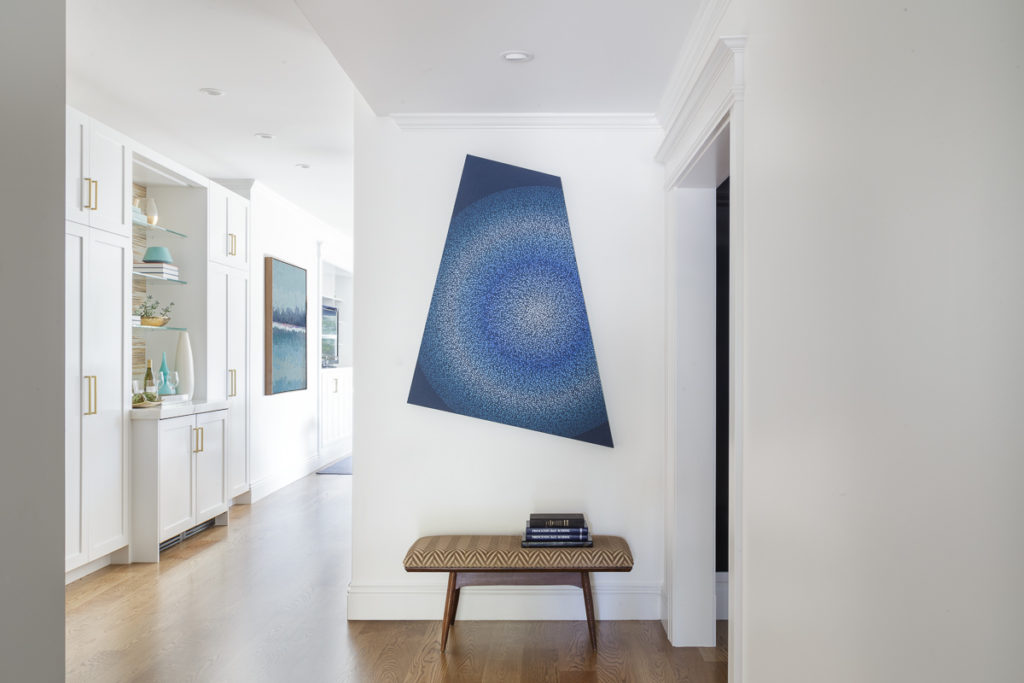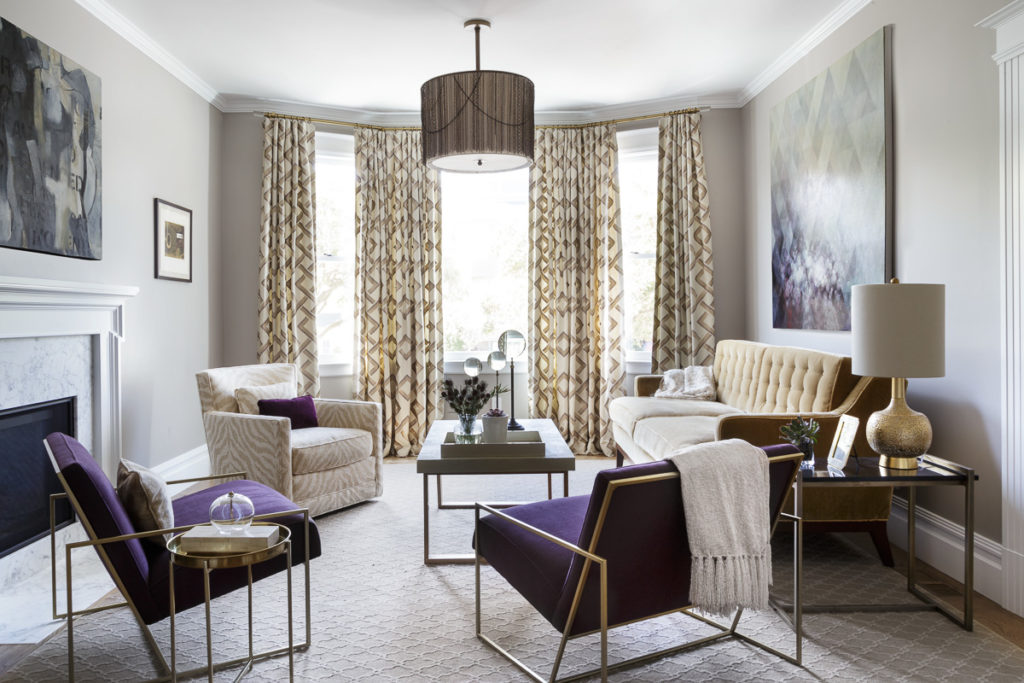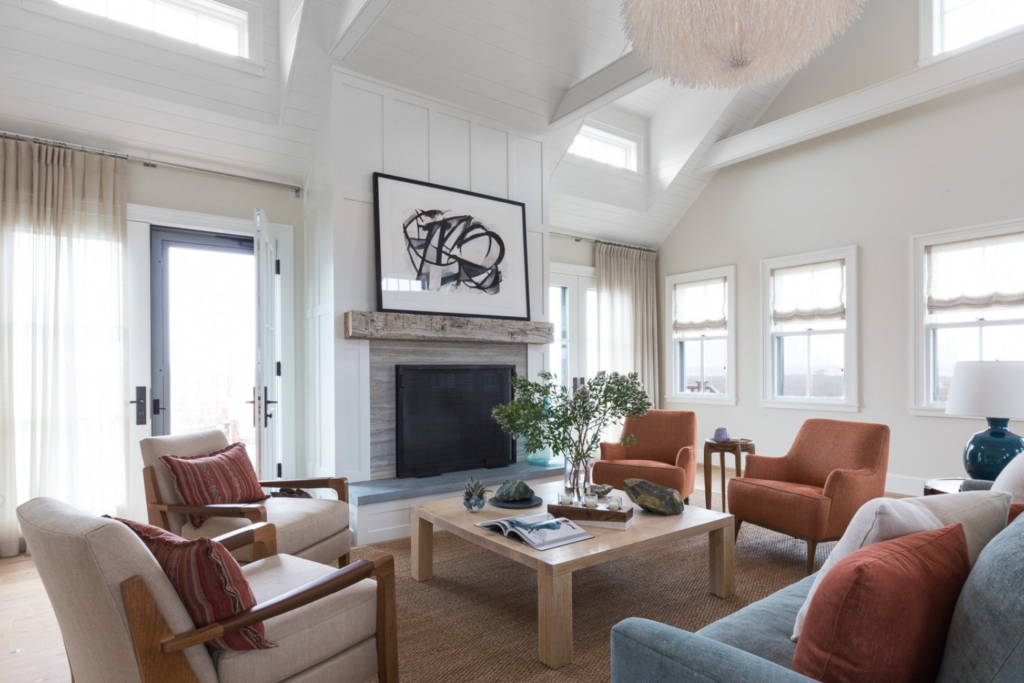How to Furnish a New Home from Scratch…the Coddington Way!

You’ve just purchased a bigger, better home in your dream neighborhood, and you’re ready to move in and start living large. But…your house is empty, and bringing in your old, less-than-lovable furniture feels painful. After all, your new home is a chance to move forward and take advantage of a clean slate, not carry your previous home along with you.
So, where do you start?
This week, I’m sharing the 5 steps we follow when furnishing a new home that oozes your favorite style, feels luxurious, and is high-quality enough to support your active everyday life. You can enlist our Online Interior Design service to go through the process with us, or try them out yourself if you have the time and expertise.
Step 1: Get Inspired
I know this feels cliche, but believe me when I say that without a design direction, you will be woefully underprepared to select the right furnishings. To get design direction, you have to do two things.
First, look at the function of your home. Sit in each room of your home, close your eyes and imagine what a normal day would look like in this space. What functions does the space need to support? How much storage do you need? Then, imagine a special occasion, like hosting friends or celebrating holidays. (Read Designing a Home You’ll Love to Share Year ‘Round.) Now, what does the space need? Make a list of all of the above.

From our San Francisco Style Project. Photographer: David Duncan Livingston
Second, now that you know the function of the home, you can start scoping out design inspiration. I love Pinterest for this. Create collections of spaces you love, curate those images down to your top 15, and then look for themes…
Which color palettes attract you most? Do you prefer lines or curves, natural woods or metals, an overfull space or a more minimally furnished space? Again, take notes on your observations.
Step 2: Take Inventory & Create Your Shopping List
Next, take inventory of your existing furniture. Now that you have a direction for the design and function of the home, which of your existing furnishings fit the bill? What do you really want to stay? What will you need to replace and buy new? These questions will help you sort your furniture into the keep and donate piles. (P.s. We detail this inventory process in our Designer’s Guide to Moving into a New Home.)
Next, is to create your shopping list, and by this, I don’t mean a list of URLs, but a more general list of “two end tables,” “one sectional,” etc. In this list, you’ll also want to consider window coverings, lighting, and hardware upgrades. No, you don’t have to settle for the cheap, builder-grade chandelier in your dining room (that the Realtor probably installed for showings). If it doesn’t match your style and taste, you have my permission (if you need it) to say goodbye to them. Bathroom vanity sconces and cabinet knobs are also easy to swap out for more stylish models.
Add it all to the shopping list, and move on to Step 3.

From our San Francisco Style Project. Photographer: David Duncan Livingston
Step 3: Select ALL Furnishings
Now, you’re ready to select the specific items and furnishings you want to purchase…and I have a few important designer tips for you:
MEASURE twice. And yes, I do mean with a tape or laser measure. The last thing you want is to wait months for your sofa and then A) not be able to get it through the front door, or B) not have it fit in your space. Scale is very important and one of the ways that working with a professional designer can save big bucks on smart purchases.
Select ALL items before you purchase anything. This ensures that everything looks cohesive together, and again, is one of the ways we get stunning results for our clients.
Don’t rely on online shopping to decide on major purchases. Instead, stick to stores that let you see fabrics or rug samples in person before making a big purchase. Or visit a local shop where you can see finishes in person.
Don’t forget that you get what you pay for as you select your pieces. So decide where you want to splurge and where you want to save. (5 Things Designers Always Splurge on in Their Own Homes.)
Have your items been selected? Feeling good about them? Now…

From our San Francisco Style Project. Photographer: David Duncan Livingston
Step 4: Place Your Orders
Placing orders sounds easy, right? We all know how handy the “Add to Cart” and “Buy Now” buttons can be. But with supply chain issues (read What’s the Deal with Lead Times?), submitting your order is no guarantee of a fast, Prime-worthy delivery.
You should expect 6-9 months (you read that right) for your items to come in. This step of the process will require patience and abiding by the old adage “measure twice, cut once” to avoid returns on things that don’t fit or weren’t what you expected. (See Step 3)
Another important piece of advice: Place your rug order first. It will be much easier to lay down an area rug, and then place the heavy furniture on top, rather than the other way around! Window coverings will also likely be an early purchase out of necessity for privacy, if your home didn’t come with any coverings.
After placing the orders, you will want to track the progress of your items and get ready to put your design together.

From our Beach House project. Photographer: David Duncan Livingston
Step 5: Assemble the Design & Style It
If you want to paint or install wallpaper, do this before you furnish your home or in those months when you’re waiting for furniture. You can use fabric swatches and finish samples of your new furniture to select a paint color palette around them. (Though it’s better if you do this step while you’re selecting furniture, not after.)
You may also need to schedule trades, like electricians, plumbers, and painters to install certain pieces or elements of the home. Trades are currently booked out months in advance, so tracking your furnishings will help you get on their calendar and have the materials ready for them.
Once all your pieces have arrived, add them into your home following your design plan and style the space with meaningful accessories that honor your taste, interests, and adventures. Then, you’re finally ready to enjoy your brand new home.
Final Tip: Furnishing a designer-quality home takes time, and if you rush the process, you may end up with spaces that miss the mark. The best way to ensure you love the result—and living in it—is to work with a team who has the expertise and design eye to make it truly yours.
Whether you’re just starting or stuck in the middle, we can help. You know where to find us. 😉
Cheers,
Melanie